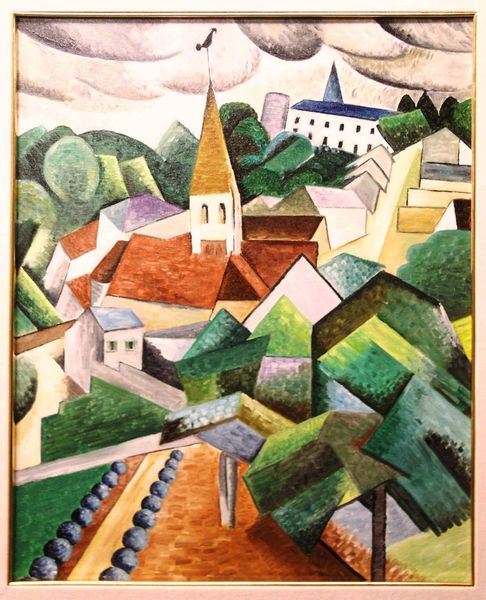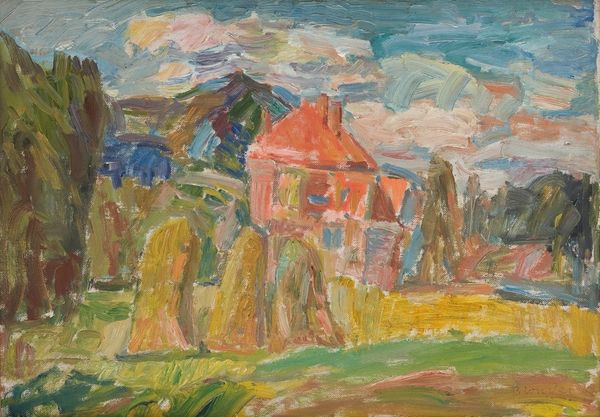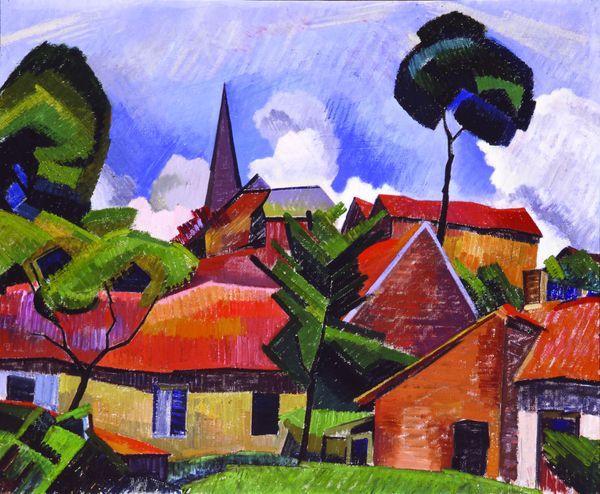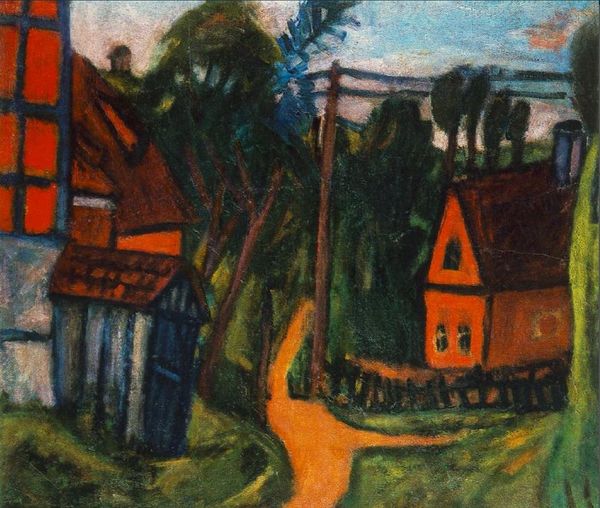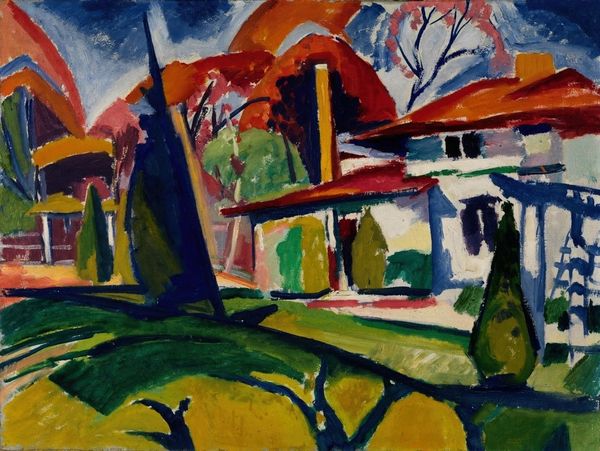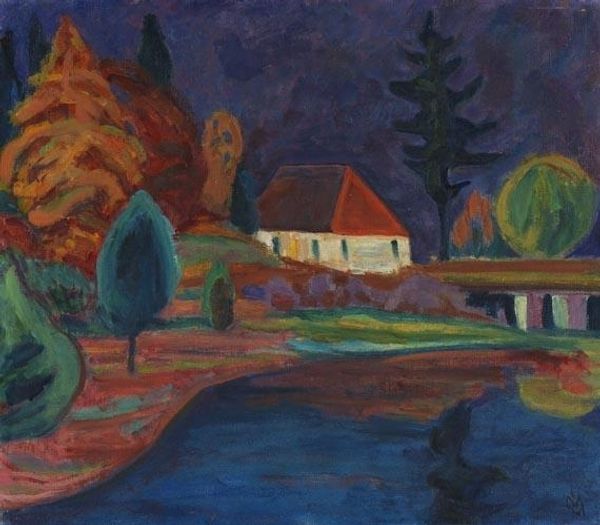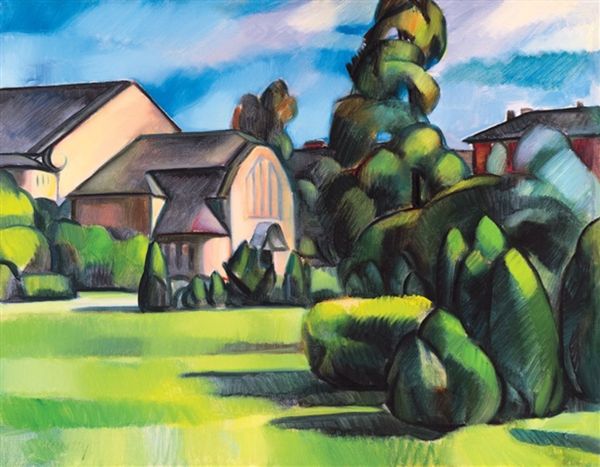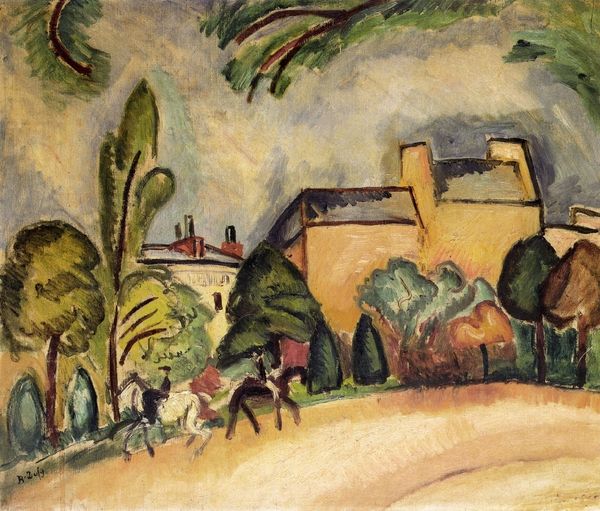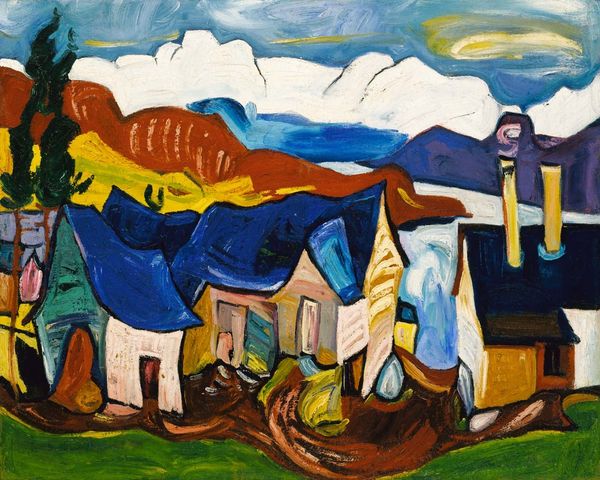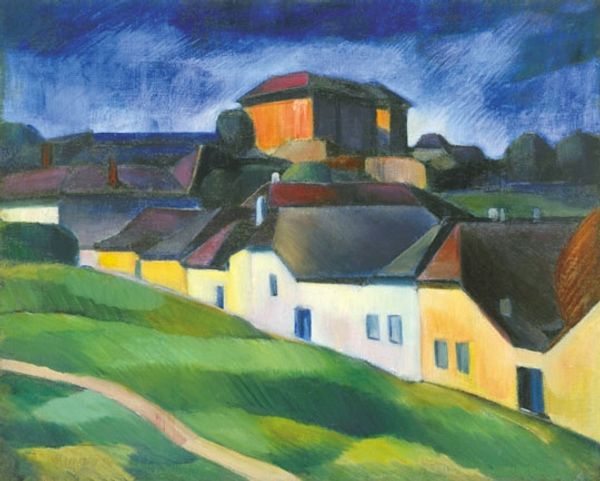
painting, oil-paint
#
cubism
#
painting
#
oil-paint
#
landscape
#
modernism
Copyright: Public domain
Curator: Before us, we have an oil painting entitled "The entrance to the village" by Roger de La Fresnaye. It’s a lovely example of his exploration into cubism. Editor: My first impression is that it evokes a quiet solitude. There’s a muted color palette, almost dreamlike, which contributes to this serene atmosphere. How do you read it formally? Curator: Absolutely, I agree. It’s interesting to observe the spatial relationships and simplified forms, no? De La Fresnaye uses geometric shapes—cylinders for the trees, rectangles for the buildings—to reduce the landscape to its essential structure, as you said. Look at how the intersecting planes create a sense of depth. Editor: Right. And beyond form, what fascinates me is how these rural scenes serve to romanticize agrarian life. How is the working class framed through a bourgeois gaze? We must interrogate if De La Fresnaye is truly documenting the struggles of a village community, or rather aestheticizing it for consumption by wealthier patrons. Curator: I appreciate that perspective, very much! But doesn’t his fracturing of perspective offer a glimpse of how that village is being observed through a more fragmented, modern experience of rurality? This is happening as societies were shifting and adapting, as ways of life evolve under a cloud of modernization. Editor: Indeed, and through the very act of depicting this 'Entrance', the painter acknowledges an exclusionary border: What does the village offer, and whom does it keep away? The village exists both as idea, as idyll, and also as real geographical entity shaped by centuries of political decisions impacting land ownership and social segregation. Curator: It certainly does make us think. It provides an interesting meditation on that juncture between artistic innovation and historical realities! Editor: Definitely a potent commentary on socio-economic transformations, camouflaged, cleverly, as quiet beauty.
Comments
No comments
Be the first to comment and join the conversation on the ultimate creative platform.

